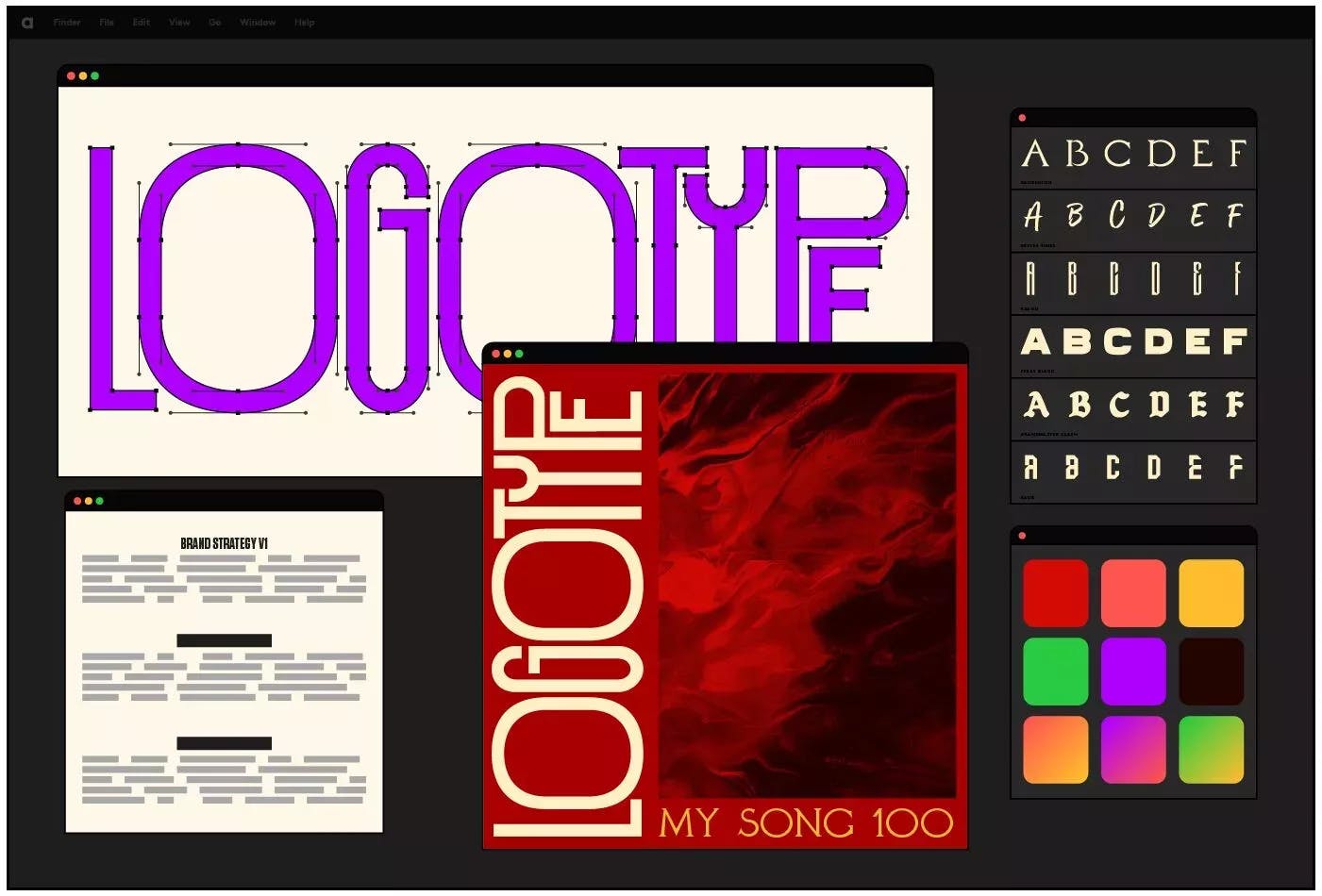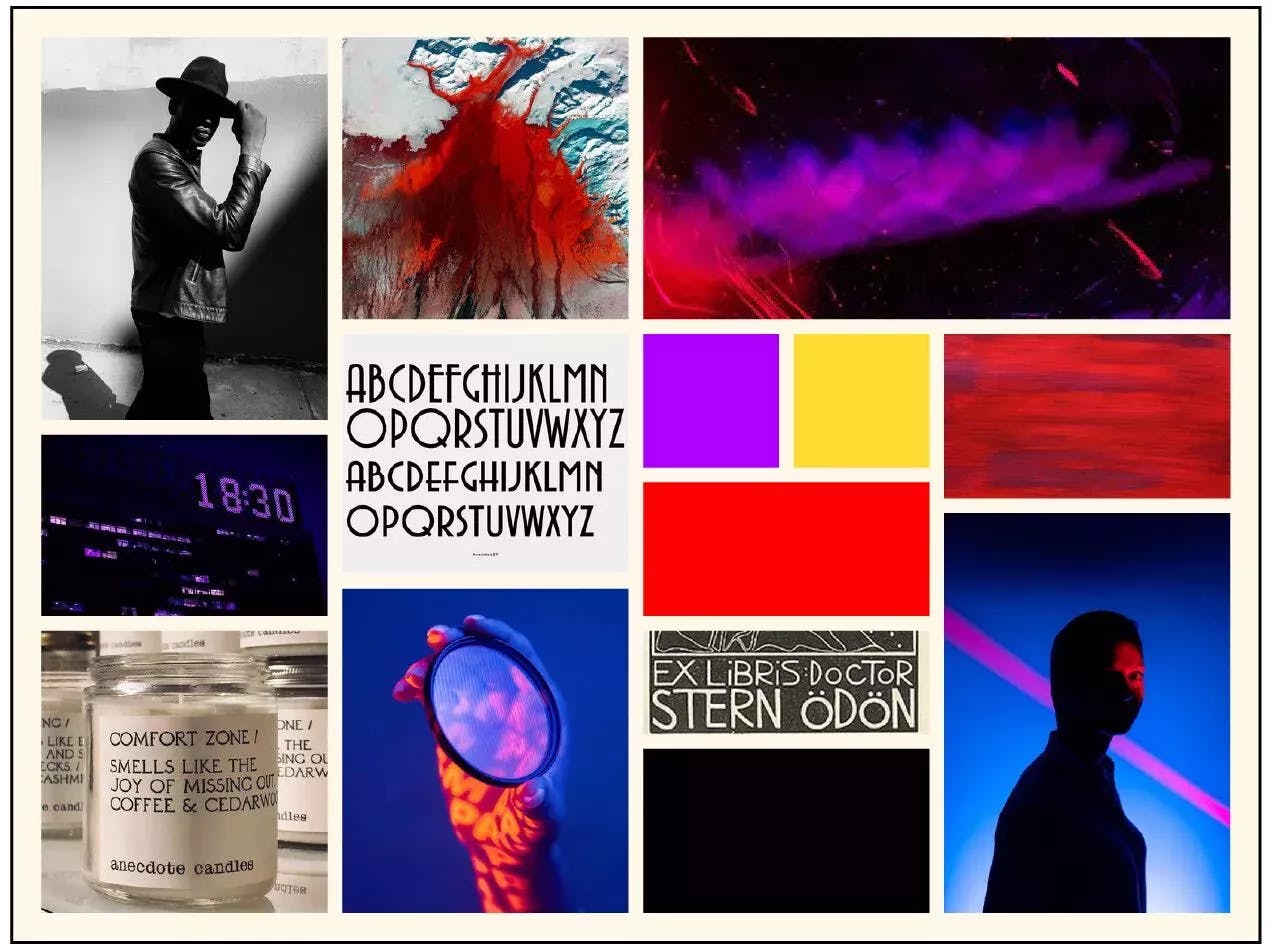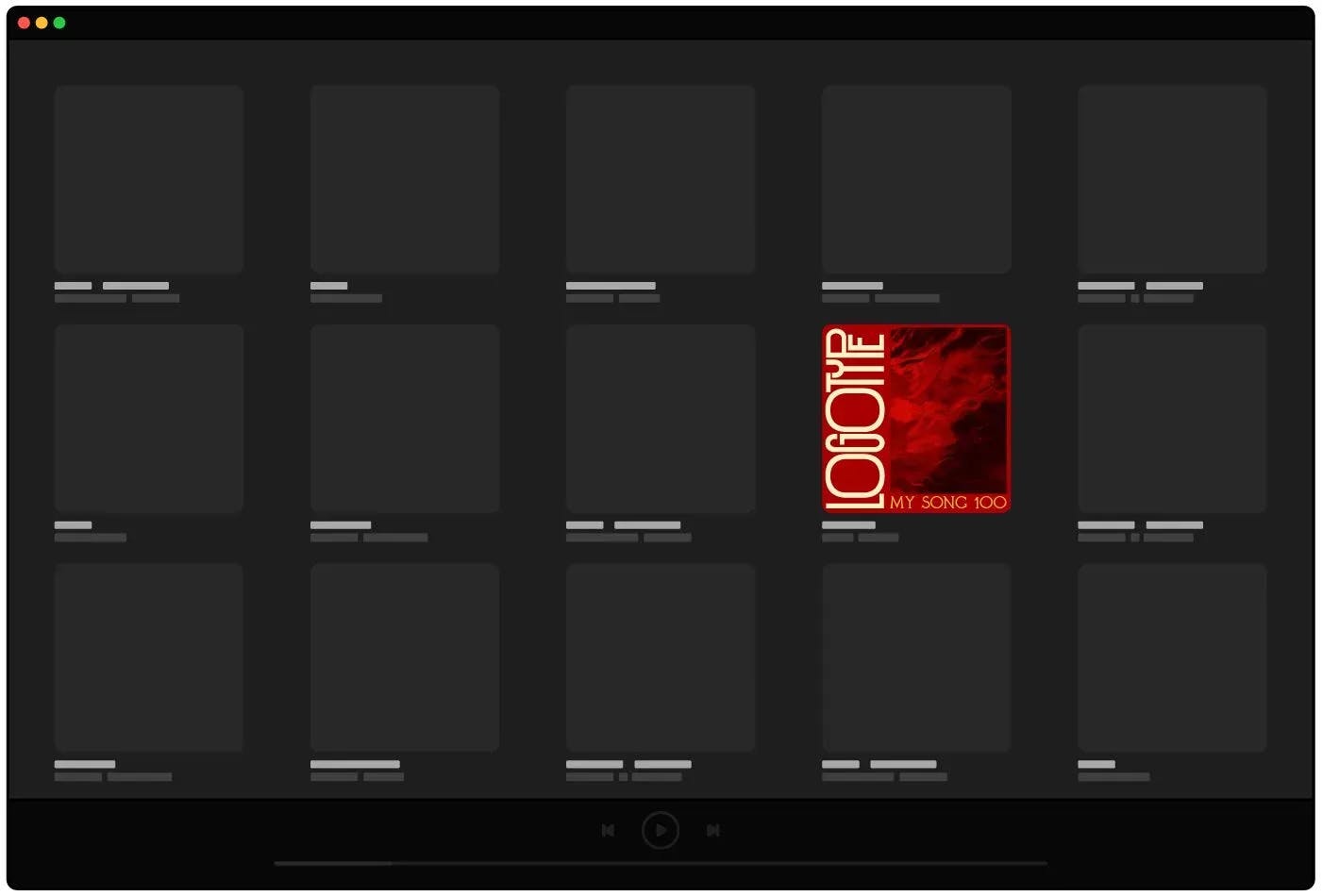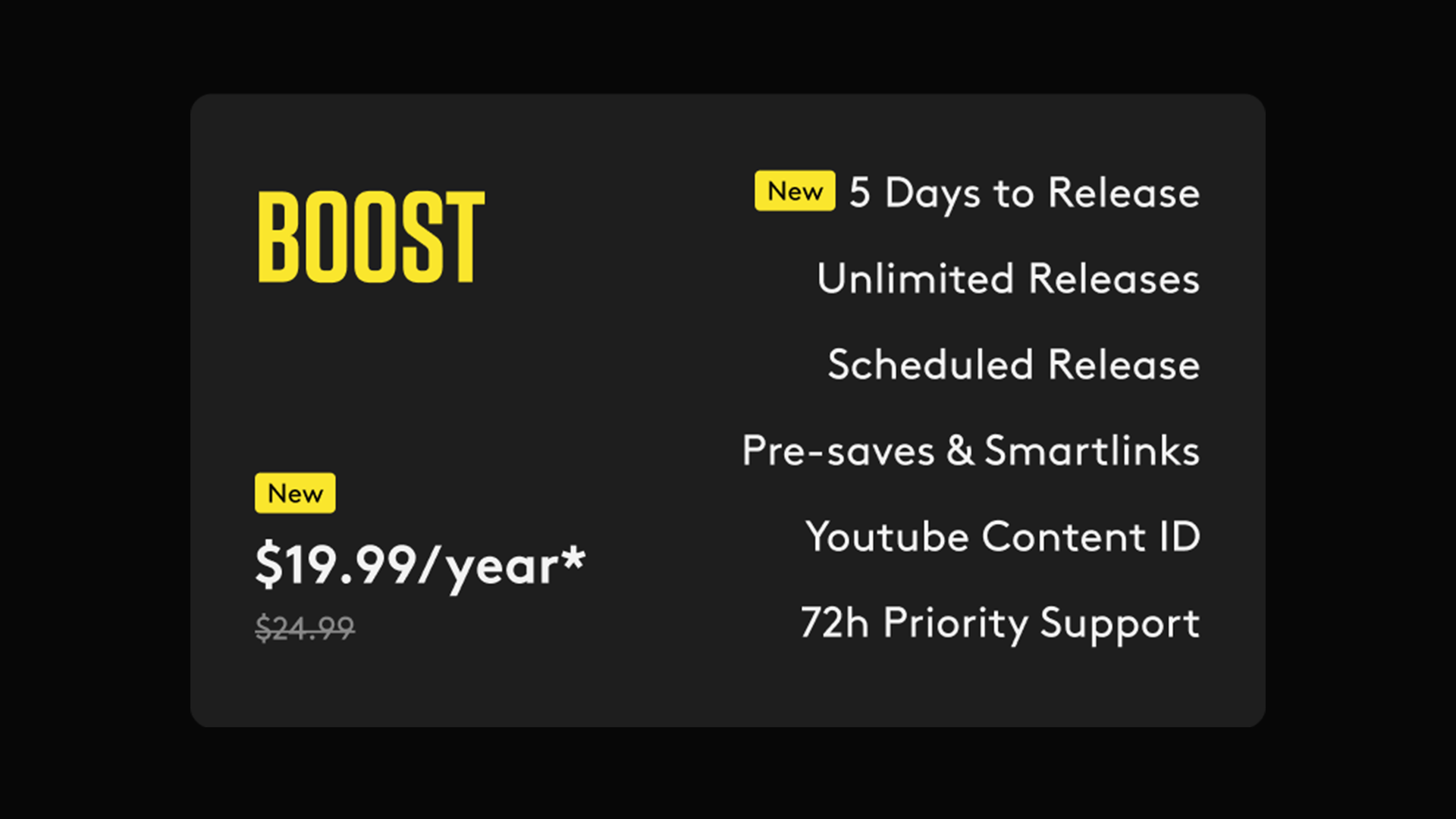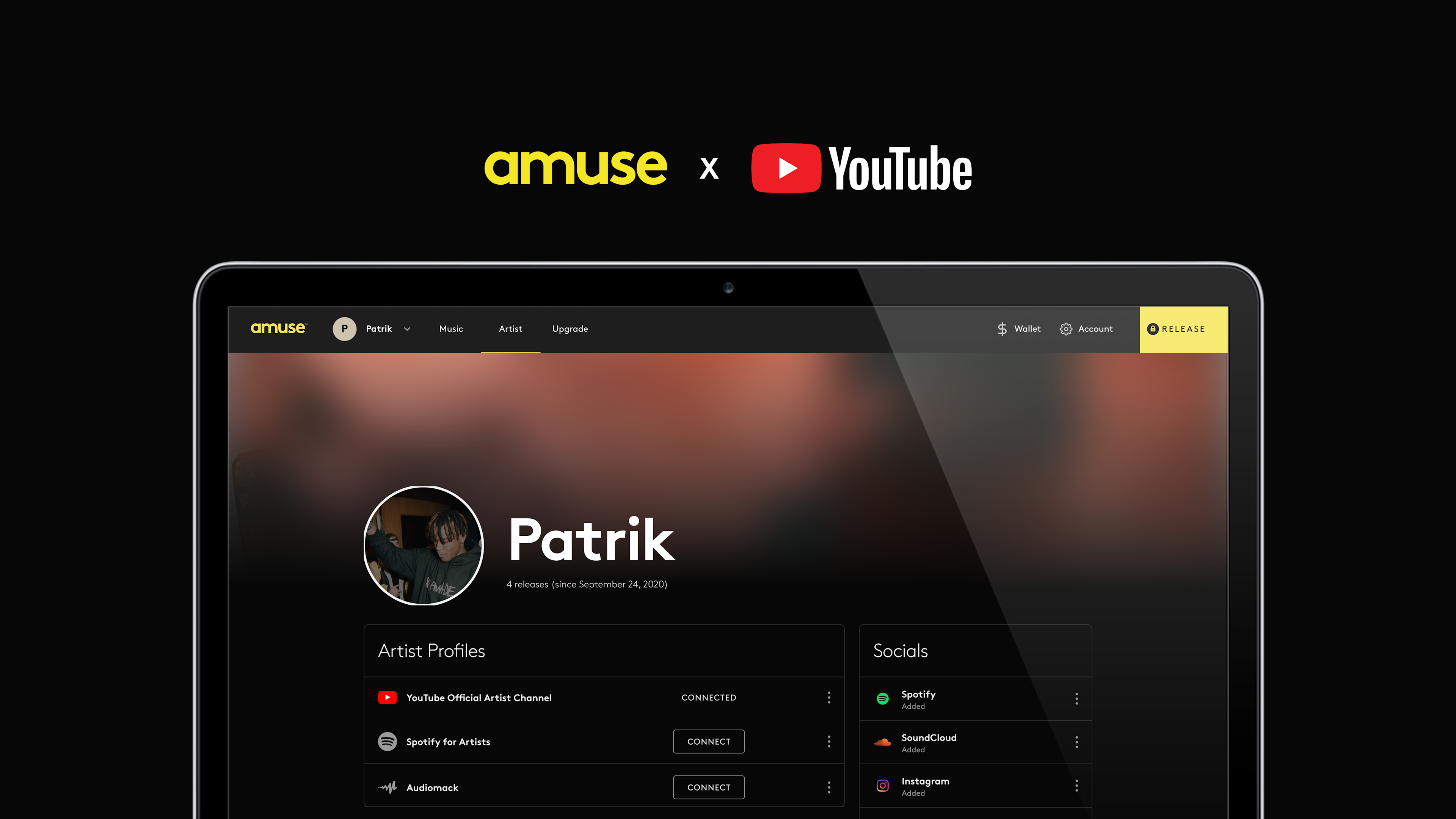How To Brand Yourself As A Music Artist
How to Brand Yourself as an Artist
From developing your visual identity to setting your brand values and competitive edge, here's our guide to branding yourself as an artist.
Amuse, amuse
From developing your visual identity to setting brand values and defining your competitive edge, we got you! Taking notes from other successful artists who have nailed their branding goes a long way in discovering your own. So we spoke to some inspiring creatives to get their take and advice on developing a stand-out visual identity.
Singer, songwriter Blue W3rd broke down how he chose his artist name, what brand identity means to him and why he's used style to stay unique.
Listen to Blue W3rd here.
Things to consider when developing your visual identity
We also asked Daniel Åberg, Design Lead at amuse about his tips for branding an artist project. First things first: be true to yourself as an artist. “If you try and create a brand that is vastly different from who you are as an artist it will be nearly impossible to make someone believe and buy into it,” says Daniel. “In the end, your brand is how others perceive you and if the image you’re trying to put out is far different from who you actually are, people will notice.”
As an independent artist, it's easy to fall into the trap of emulating artists you admire. Their look, their vibe, or how they talk on social media. But finding your own voice is what will set you apart from the rest.
“Building a recognizable brand and visual identity takes time and is something that you have to stick with for a while. It’s important to keep in mind that whilst you might have seen your branding and visual identity for a long time, it might still be new to the general public.”
“It’s important to keep in mind that whilst you might have seen your branding and visual identity for a long time, it might still be new to the general public.”
Many of the most hyped new artists right now have their own unique brand and way of identifying with their fans. “You can heighten certain parts yourself to create a more streamlined image,” adds Daniel. “But don’t make things up completely.
“A visual identity is only a part of the brand, it’s the most recognisable part of it but it’s important to build a good foundation before you even start with the visual side of things.”
So, how do you develop your brand identity?
Processes for developing brand identities can vary from artist to artist, but there are a few baseline steps that can apply to any artist, market, or genre.
Before you start on the visual side, start by developing a brand platform that you can apply across your whole brand — not just on the visual side.
There are 5 key steps for developing your brand platform: defining your USP, brand values/edge, genre, competitors/idols and putting together a mood board. If you don’t have a lot of time to spend developing it, just focus on the moodboard (more on that soon).
Unique selling point (USP)
Who are you?
What do you do?
Why does it matter?
These can be difficult to define, but putting them down on paper can help you and your team ensure that your brand and visual identity stays true to you. Try and make them as specific to you as you can. The last point “why does it matter” is especially important as that will help you stand out.
Brand Values/Edge
Your edge or brand values are usually 2-3 of your different traits that you want people to associate with you. “These should be true to you and the music you make and will help you to differentiate yourself and also influence your visual identity,” says Daniel. “Having these values defined will also make it easier for others you work with (like a photographer, stylist, graphic designer etc) to understand your brand and what to do and not to do.”
An artist who has mastered his brand edge is Abel Tesfaye, aka The Weeknd, who has used traits of mystery and intrigue to build his career. First, he was the guy with the dreadlocks. Then he cut them. He was Drake’s protege, then he turned down OVO Sound. Fans never really know where they have him. And that’s exactly how he wants it.
“We live in an era when everything is so excessive, I think it’s refreshing for everybody to be like, ‘Who the f**k is this guy?’ I think that’s why my career is going to be so long: Because I haven’t given people everything,” Abel told Rolling Stone in an interview in 2015.
“I feel like everything we do comes down to how it looks. Even no branding is branding. For example, you had no face or image to put to my music at first. That was branding,” he also told Fast Company. “I spend just as much time on how people hear my music as I do the actual music, no matter how long it takes. I’m such a visual artist as well that it always goes hand-in-hand.”
Genre
We get it: defining yourself to a genre is sometimes not your vibe. But people will still try and put you in a genre, so it can be helpful to figure out which genre you belong in. “Each genre usually comes with it’s own tropes, style and trends,” says Daniel. “It’s good to look into and be aware of these.”
Competitors/Similar Artists
As with genre, people will most likely compare you to other artists whether you want it or not. So defining yourself, your competitors, or similar artists can help you stand out amongst them. Your fans want to be able to relate to you, so think about what story you want to tell. How do you want your fans to feel when engaging with you? Give your listeners a reason to listen to your music instead of another similar artist in your genre.
Mood board
Mood boards (also called vision boards) are a super powerful tool when it comes to building and visualizing your brand identity. They’re a physical or digital collage consisting of images and text in a composition that inspires, motivates, or provides guidance for you and your team, helping you communicate your brand identity and align on future goals.
“It’s a very effective tool for quickly conveying a feeling and a visual guideline for anyone working with the brand,” says Daniel. “I usually ask the artist to provide some kind of visual inspiration so I know where to start unless we’ve gone through the other strategy parts. This is a good tool to help convey the visual feeling you want to achieve to others and can contain inspiration/direction for colors, typography, photography, and video.”
Once this is defined, you can start choosing or designing your typography, colors, logo, and any other visual elements that will live as part of your artist brand. Try using an online service that connects you with talented designers if you want to outsource to get your logo made. Two great alternatives for this are Fiverr and Upwork.
Should I take inspiration from other artists?
While it can sometimes be ok to emulate an artist’s music style because of a sound trend, you should stay away from straight up copying another artist's brand look and feel.
“In general, artists should try and create something that’s theirs and that represents them rather than imitating someone else,” says Daniel. “You can look into what ‘world’ you want to exist in (like genre or competitors) so that your visuals help people put you in that world. But if you try to emulate someone else too much, there’s a big chance that you’ll end up with something that represents another artist much better than you and the music you make.”
Nailing your cover art
Before you start designing the cover art for your next release, you should first define if the artwork is for a single or part of something bigger, like an EP or album. If it is part of a bigger project, you should try and connect it with your brand and the upcoming release in some way — this will help bring your fans into the “world” you are creating for the upcoming project.
It’s also important that your cover art represents your music and helps connect your fans to it. “The artwork is the first thing people see, so it should give some kind of visual representation of the song,” says Daniel. “If the song tells a story you can try and convey part of that story in the artwork. Or it could just be a feeling or mood you want to convey in the song and that you want to give the listener when they see the artwork as well.”
Anything to avoid? “I don’t think there’s anything you necessarily need to avoid other than copying someone else. And I generally recommend that artists should seek inspiration from things other than existing record covers.”
Tips for making your cover art stand out on Spotify
There’s no one simple trick for making your artwork stand out on streaming platforms, but there are some things that can help.
Don’t make your artwork too busy since most covers are displayed small
Strong colors can make your artwork pop more, drawing the eye in
If you use stock images, try and modify them and not just use them as is. Chances are that your image might have already been used if it’s from a free stock photo site
Consistency: this is where a visual identity can help. If you have a recognisable style (a style of photo, clear logo, or consistent fonts) it will help fans recognise the artwork as yours
Own the rights to the image you use as artwork (check out Unsplash or Pexels for free stock images). And if you don’t, be on the safe side and ask the person that owns the image if it’s OK for you to use it. Keep their approval in writing.
If you’re not a design pro, there are a heap of easy-to-use apps and tools to help you with cover art. Check out Canva and Figma if you’re a design rookie, or Photopea and Gimp if you know your way around Photoshop.
For more cover art tips, check out our YouTube series Breaking It Down here.
Mastering your merch
Before you go and print a bunch of tees with your logo on them, take a step back and consider your overall brand identity, what you want your merch to represent and how you want your fans to feel while having it.
“Try and create merch that you yourself would want and see if there are any elements in your music or artwork that you can lift out,” says Daniel. “Talking with or looking at different merch producers can also be a good start for getting inspiration.”
It’s common to design merch around key milestones in your career, like album releases, tours, or festival sets, because a limited drop makes the merch feel more special.
Instead of just printing a tee with your logo, try to conceptualize something more interesting. “If you’re an artist that focuses on storytelling or lyrics, you could create a magazine where you collect the lyrics. Or you could create a piece that you wear on your artwork, and then sell that as merch.”
